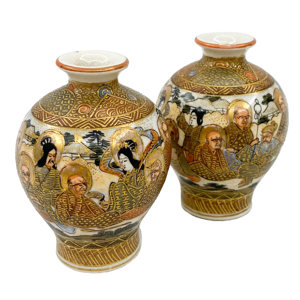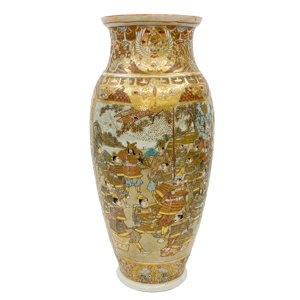The origins of Satsuma ware date probably back to the late XVI or early XVII, after the deportation of Korean potters to the Satsuma region by Japaneses. Originally, the use of this porcelain was limited to daily activities, but after the Universal Exposition of 1867 Western people started to be interested in these items, which pushed the artisans to develop mass production for export purposes. However, many craftsmen - such as Taizan Yohei IX, Itō Tōzan, Kinkōzan Sōbei VI, Yabu Meizan, Chin Jukan XII, Miyagawa Kōzan (Makuzu), Seikozan and Ryozan - would be remembered for their faith to traditional techniques and decorations.
Thanks to two large stone vases and a basin, Miyagawa Kōzan - who inherited this art from his father - was the only winner of the Grand Prix at the 1900 Paris Universal Exposition. Many descendants of the great artists carried on the family tradition, but their porcelains have slightly changed in the new century. The work of Satsuma artisans continued until the end of the 20th century. Although the oldest pieces do not have any markings, it is possible to identify the most recent ones through the different brands applied by each artist, most of the time in Japanese.




 Text via WhatsApp
Text via WhatsApp